Dear esteemed colleagues,
I am submitting this study in the hope that you will find it worthy of publication in your prestigious journal, Almost Science.
I wrote this treatise after years of extensive research, documentation, and observation at Norton Point Beach, a three-mile isthmus on Chappaquiddick, bordered by Nantucket Sound and Katama Bay, that runs from South Beach to Wasque Point. (Technically, Norton Point isn’t Chappaquiddick, but a science journal is no place for technicalities.)
I was employed as a ranger for two years at Norton Point. Over that time, I got to help critters and to assist humans in a wide variety of predicaments. I also got to roam the beach on a wicked cool ATV.
This study will detail the mating rituals, eating habits, and heretofore inexplicable behavior of the resident species at Norton Point. It will also examine invasive species, referred to in the local lingua franca as “New Yorkers.”
I look forward to hearing your thoughts, comments, and tearful praise.
Respectfully submitted,
Ranger Barry Stringfellow, Ret.
The beaches, the sky above, and the surrounding waters at Norton Point Beach are home to a dazzling fecundity of fauna, some of which date back to before the dinosaurs.
The bay and ocean abound with finfish and shellfish. Gray seals (Halichoerus grypus) pop by daily. Harrier hawks (Circus hudsonius) fly low over the dunes, scanning for rodents or an unfortunate plover chick. Black skimmers (Rynchops niger) glide over the bay, a feather’s breadth above the surface, effortlessly scooping up prey with their mandibles. Nothing wakes you up in the morning like being dive-bombed by a squadron of least terns (Sternula antillarum), who often leave a fecal calling card.
Late one summer, a massive Portuguese man o’ war (Physalia physalis) invasion kept us busy picking up the iridescent blue blobs and treating stung swimmers. Some people believe urine neutralizes the sting. It doesn’t. But that didn’t stop me from telling New Yorkers (Homo sapiens entitled) that it did.
Katama Bay is a major breeding ground for Atlantic horseshoe crabs (Limulus polyphemus). I developed a deep fascination with these creatures. They mate in May and June in a dance they’ve been doing for 480 million years – when Idaho was a rainforest with flesh-eating reptiles swooping overhead, and when housing was still affordable on the Vineyard. (Atlantic sand crabs – Emerita talpoida – are relative newcomers to Norton Point, dating back only 250 million years.) Horseshoe crabs play a crucial role in the beach biome. Their spawning season coincides with the northward migration of hundreds of species of birds that depend on their protein-rich eggs for survival. A single female horseshoe crab can lay more than 80,000 eggs during spawning season.
These Paleozoic creatures also helped us battle the Covid-19 pandemic. Their blue blood contains the only known source of amebocytyes, which can detect a potentially fatal bacterial endotoxin. Scientists have so far been unable to duplicate amebocytes in a lab, which they use to test the safety of human vaccines.
Horseshoe crabs are a romantic species – they get particularly busy during the full moon. The smaller male latches onto the larger female from behind, then begins their mating dance. They inch along for hours, making graceful, swirling patterns in the sand. For some reason, they often follow tire tracks left by oversand vehicles (OSV) and burrow into them – sometimes with disastrous results. Incredibly, I found some that had been run over but were kept alive by their ancient armor that hasn’t mutated in hundreds of millions of years.
I became the official Norton Point “Horseshoe Crab Wrangler,” patrolling the bayside trails early in the morning, digging them out of tire tracks, and putting them out of harm’s way. I frequently picked up pairs in flagrante delicto and carried them to the water. Never once did a male ever let go.
Respect.
Sharks (Chondrichthyes, Elasmobranchii) are another prehistoric species that summers at Norton Point. At least once a day someone would invariably stop at the gatehouse and ask, “Are there sharks out there?”
Since honesty is a hallmark of a good ranger, I’d tell them, “There’ve been sharks out there for 200 million years,” usually eliciting a nervous laugh or an occasional U-turn. I never mentioned that surfcasters just up the beach were landing 200-plus-pound brown sharks. I once saw three Island high school girls rotate on a fishing rod for two hours to land a 240-pound brown shark at Wasque. Truth is, sharks are everywhere in these waters. They’re just not interested in us. That said, I strongly recommend leaving your seal suit at home.
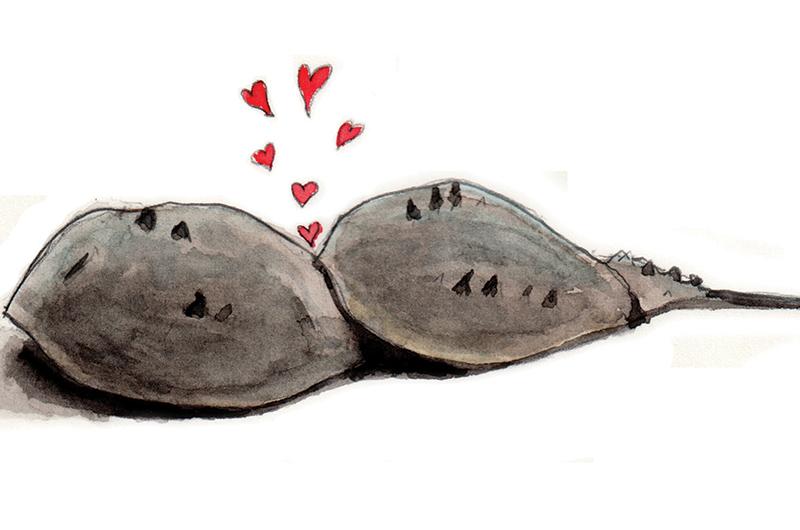
Some of my most memorable wildlife encounters involved American oystercatchers (Haematopus palliatus), the shorebird with black and white plumage and a bright red telescopic beak. I often wondered why Mother Nature bequeathed these black and white shorebirds its incongruous red beak. What possible advantage did it provide? Didn’t it make them more visible to predators? I wrote the august Cornell Lab of Ornithology for an answer. A helpful woman in the press office passed my query along to several shorebird experts. A few weeks later I got an answer: “Nobody knows.”
One spring, a female oystercatcher nested very close to the vehicle trail. All we could do was rope off a three-foot-square boundary and hope for the best. She stayed on the nest, resolute, unmoved by gale winds, cold rains, or the blasting subwoofers of passing SUVs.
I’d drive by every morning and exchange pleasantries to her tolerant blank stare. Then one morning she was gone. The nest was empty, except for a broken shell. My heart sank – had the skunks (Mephitis mephitis) struck again? (Much is made about the human impact on breeding shorebirds, but on Chappy shores, skunks do far more damage.)
A field biologist emerged from the dunes and waved me over. I got to see, and video, an hours-old oystercatcher chick taking its first wobbly steps, chirping at a surprisingly loud volume given its diminutive size. With its comically big feet, it skittered between clumps of beach grass, occasionally stopping to rest on its tail feathers and catch its breath. I posted a video on the Islanders Talk Facebook page to share the magic, and to underscore the need to drive slowly on the trails – a constant battle on Norton Point.
A few weeks later, we were cutting through a restricted nesting area on our way back from saving a Jeep about to be swallowed by the rising tide. We slowly passed a motherless nest with three eggs. One of them was rocking. Soon, a little brown beak that would someday turn red pierced the speckled shell from within. Minutes later it was free of its incubator, chirping loudly. Barely able to stand, it began knocking on the shells of its two siblings to wake them.
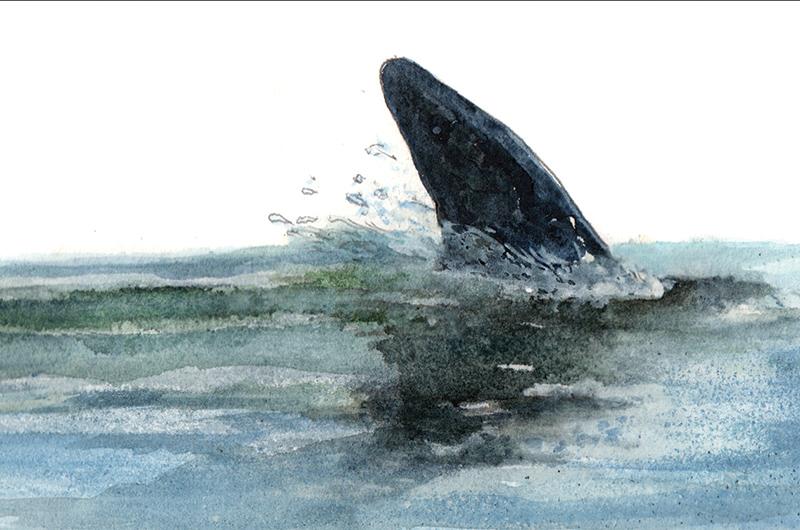
Then there was Roscoe. It was late summer when I came across this broken-winged bird. Oystercatchers are usually in pairs, but he was always alone. It wouldn’t be long until it was time to head south, a trip he obviously couldn’t make. Chris Kennedy, then the Island superintendent for The Trustees of Reservations, found a shorebird rescue clinic in America and if I could catch him, Roscoe had a reservation. I’d had wounded gulls eating out of my hand before, so I was hopeful I could get Roscoe close enough to corral him. But oystercatchers are not as bold as gulls. I tried to get within range, tossing out cracked clams and mussels. He kept his distance and only took the offerings when I backed away. Over the coming weeks, I inched closer, but never close enough to catch him. The cool snap of fall was in the air. His time was running out. But we were making progress. Then the year’s first nor’easter blew in. The timing with the full moon made for an epic storm surge; large swaths of beach were overrun by torrents of ocean water charging into the bay. Roscoe never stood a chance.
The most intriguing, bewildering, and unpredictable fauna on Norton Point are unquestionably the humans (Homo sapiens). Norton Point is a cherished destination for this species. Some of them migrate from great distances to feed, drink, and frolic. The resident H. sapiens – who pay less for their OSV sticker – also flock to Norton Point after enduring another long, gray Island winter.
The juvenile species are often overcome with a sudden, inexplicable urge to dig. There’s no point to it. No beginning or end, winning or losing. They just dig a hole in the sand and sit in it. If you told a kid to dig a two-foot-by-five-foot hole in the dirt at home, you’d be met with scorn and possibly accusations of child abuse. But in the sand by the ocean, digging a hole becomes a prized form of fun. Part of my ranger duty was to tell people when they were digging too deep and putting themselves in danger, which often elicited a skeptical response. This is one instance of many where a ranger’s cell phone comes in handy. We use apps for tracking storms, tracking sharks, and predicting winds, but nothing is more convincing about the dangers of digging like a YouTube video of a panicked beachgoer being rescued from the hole they dug.
There was a “No Alcohol” policy at Norton Point that was universally disregarded. (I admit to being a neglectful ranger in enforcing this.) Telling a Norton Point beachgoer “no alcohol” was like telling a hungry grizzly bear “no salmon.”
Outside of eating and drinking, cornhole, which had a much more salacious meaning in my youth, was the most popular activity on the beach. For some reason, there is a correlation between proximity to the ocean and the amount of time people spend attempting to toss a beanbag into a small hole. There was also a game where they tossed two balls connected by string, attempting to entangle them on their opponent’s wicket. I had no idea what it was called or why anyone would want to play it.
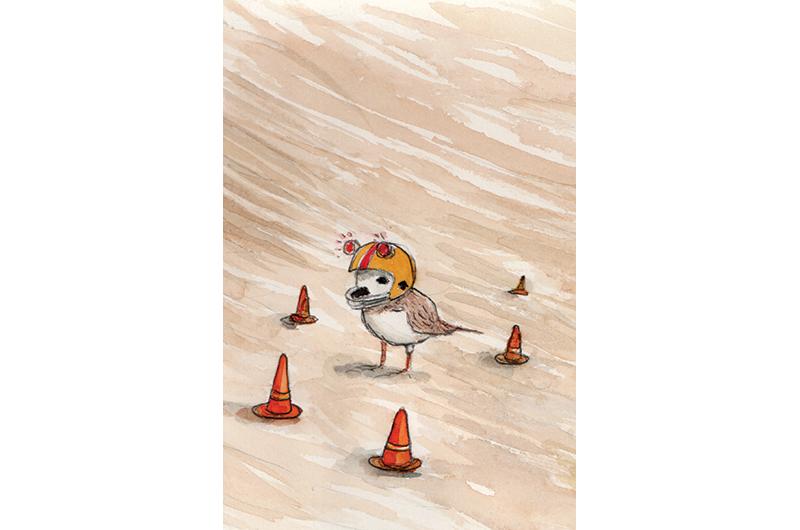
Norton Point also sparks a primal urge in humans to fly banners and flags denoting the territory from which they’ve migrated, the university they’d matriculated, or the political candidates they venerated – this was especially prevalent with conservative-leaning H. sapiens. There were Trump flags aplenty during my first summer. The following summer the Gadsden “Don’t Tread on Me” flags were ubiquitous. But I never once saw a flag proclaiming allegiance to Elizabeth Warren, Joe Biden, or Pete Buttigieg.
One of my most important ranger duties was extricating vehicles stuck in the sand – practically a daily occurrence. Many humans instinctively panic when their tires begin to spin and gun the gas, which only digs them deeper. Even though signs are posted everywhere telling OSV drivers to air tires down to 15 PSI, they often neglected to do it. During the Covid summer, an influx of new, high-end SUVs – BMW, Range Rover, Porsche, Audi – were responsible for many of our calls. The most expensive SUVs tended to perform the worst in the sand. They frequently got stuck because the drivers thought they didn’t have to air down because they had a “sand setting.” Two years of rescuing stuck motorists led to the discovery of another immutable law of human nature – the less valuable their vehicle, the better they tipped their friendly ranger.
Our crew had a perfect record of sand saves until a young man got his new Jeep stuck in sharply sloped, soft sand that was beyond the eastern terminus of Norton Point, which was clearly marked with signs, rope, and fluorescent pink flagging. “I thought the signs were just suggestions,” he told me. For a long time, this young man was in the lead for the Norton Point “Darwin Award,” given to the H. sapiens displaying the least evolved intelligence. He was eventually dethroned by a man who put his Labrador retriever on his stand-up paddleboard and paddled out to a trio of gray seals so his dog could chase them. Fortunately for the dog, the seals swam away.
Once when we were rushing to extricate a stuck vehicle that was creating a bottleneck during the afternoon exodus, I thought I caught a glimpse of two naked H. sapiens on the bayside beach. I dismissed it, assuming it was the result of a long, hot day in the sun, and/or the negligible amount of skin covered by today’s female swimwear. (Another trend among H. sapiens – women’s bikinis get smaller every year, while men’s swim trunks get longer.) When I got back to the gatehouse, I was told that not only was the couple sans clothing, but apparently crabs and birds weren’t the only species that mated at Norton Point.
There are promising signs at Norton Point that H. sapiens are still capable of evolving. On a sunny weekend when the entire beach is open, we’d easily average over 250 vehicles, usually packed tighter than a clown car with enough supplies to cross the Khyber Pass. Some days there were more than 400 vehicles. But no matter how crowded it got, the next morning, there was surprisingly little litter left behind. The vast majority of Norton Pointers are conscientious about taking care of this precious tract. (The one exception is dog owners, who have the wherewithal to pick up their dog’s feces, then leave the poop bag behind for someone else to pick up.)
The biggest source of litter comes from distant lands. Norton Point is ideally situated to catch the floating flotsam that rides the Gulf Stream and prevailing winds up the East Coast. One morning after three days of steady southwest gales, I picked up fifty-seven mylar balloons and ten latex balloons. One balloon was from a realtor in Staten Island (192 miles as the balloon floats away), another was from the Grey Ghosts of Westford Academy (93 miles away). The ribbons attached to these balloons have the half-life of plutonium – they never showed signs of decay. Balloons are not the only man-made debris washing ashore. Water bottles usually number half as many as the number of balloons. Pieces of Styrofoam were everywhere. Every piece I picked up – takeout containers, meat-packing trays, egg cartons – had sharp triangular perforations of fish bites.
The balance between recreation and conservation is a difficult one, and when it comes to piping plovers (Charadrius melodus), it’s downright combustible. Of all my H. sapiens encounters, nothing triggered more aggression and anger than being denied entry when the beach was at capacity – which only occurred during piping plover nesting season.
There are valid arguments on both sides of this long-standing imbroglio.
Mother Nature did a spectacular job camouflaging these wee birds. They’re extremely hard to see from just a few feet away, let alone from a driver’s seat. From a conservationist standpoint, closures are working – the bird’s status has improved from endangered to near threatened.
But this doesn’t mollify an enraged vacationer who has one week to use his or her sticker. Suggesting there’s about 125 more miles of shoreline on the Island is throwing gasoline on the fire. For many, understandably, there is no substitute for Norton Point.
In the interest of keeping rangers off the endangered species list, I have devised a solution that will allow C. melodus and H. sapiens to peacefully coexist: when the plover chicks hatch, simply outfit them in tiny helmets with flashing red beacons. Not only will this make them visible to drivers; it will also make them indigestible to harrier hawks and other predators, thus increasing their population more rapidly. It’s an ecological win-win.
You’re welcome, Norton Point.
Below is more photographic documnetation that ranger Stringfellow captured himself:


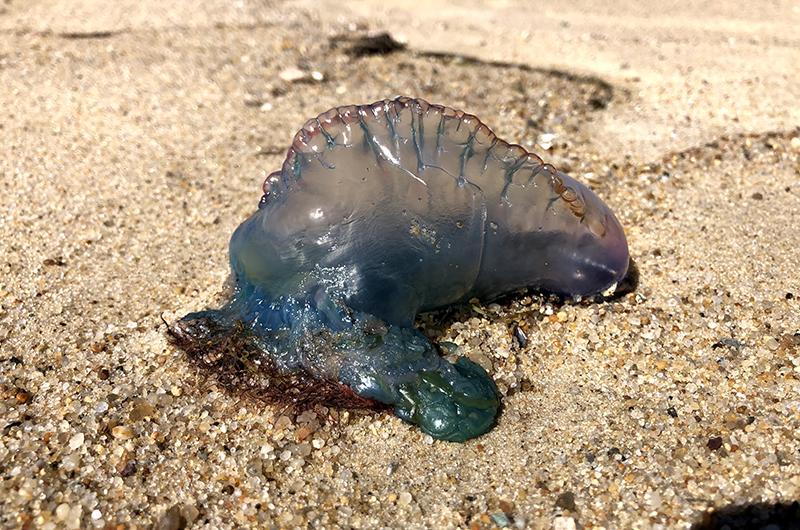
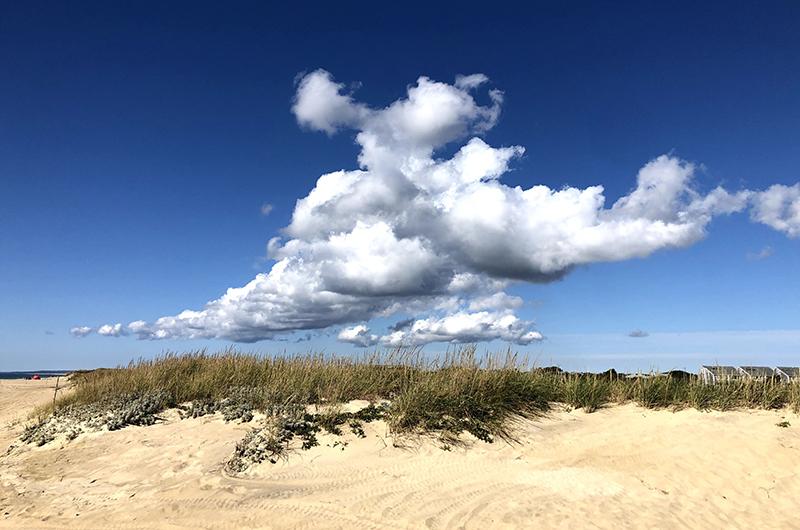

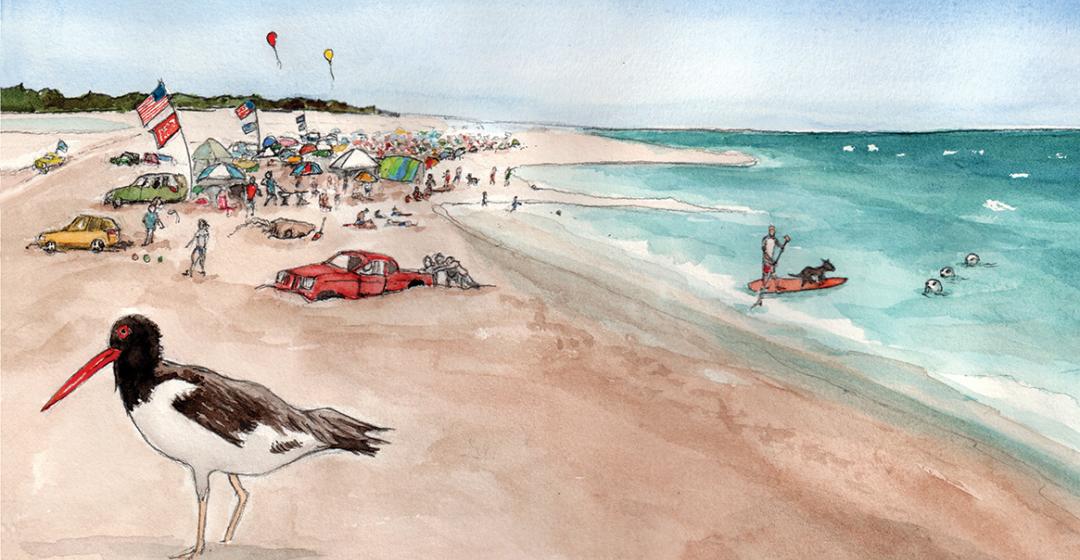


 1 comment
1 comment
Comments (1)